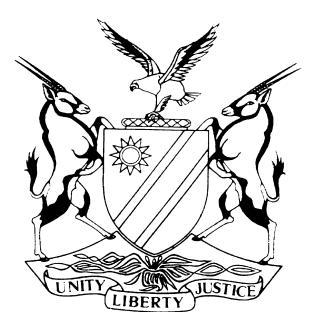REPUBLIC OF NAMIBIA


IN THE HIGH COURT OF NAMIBIA NORTHERN LOCAL DIVISION, OSHAKATI
REVIEW JUDGMENT
PRACTICE DIRECTIVE 61
Case Title: The State v Petrus Phillipus | CR: 13/2024 | |
Division of Court: Northern Local Division | ||
Heard before: Salionga J et Kesslau J | Delivered on: 15 April 2024 | |
Neutral citation: S v Phillipus (CR 13/2024) [2024] NAHCNLD 38 (15 April 2024) | ||
It is hereby ordered that:
| ||
Reasons for the order: | ||
| KESSLAU J (SALIONGA J concurring) [1] The matter from the Magistrate’s court of Ondangwa, is before this court for review in terms of s 302 of the Criminal Procedure Act 51 of 1977, as amended (the CPA). [2] The accused was charged with count 1: Assault by threat and, count 2: Crimen Injuria. He pleaded guilty and, after the application of s 112(1)(a) of the CPA, was convicted on his pleas of guilty and sentenced. [3] The following queries were sent to the Magistrate: ‘1. The Magistrate applied s 112(1)(a) of the CPA and convicted the accused on both counts. This section is normally utilised for minor offences, however, in sentencing the Magistrate stated that: “The offence is very serious . . .” 2. The annexures of charges are incomplete in that the heading of count 1 read “Assault- Assault by” whilst the heading for count 2 only states “Crimen”. Does the Magistrate agree that such offences does not exist? 3. The details in count 2: Crimen injuria, is vague in that it listed what appears to be all possible options without detailing the so called ‘swearing’ or obscene language that was used. Lacking that detail, how was the Magistrate satisfied that an offense was committed?’ [4] The Magistrate, in reply, conceded that the application of s 112(1)(a) of the CPA should be utilised for minor offences and that her remark during sentencing, of the offences being ‘very serious’, was a misdirection on her part. Furthermore, that the headings of the charges were defective and lastly, that the charge of crimen injuria lacked the essential details required. [5] I wish to echo what was said by January J in S v Dembenge1: ‘The wording of s 112(1) (a) of the Criminal Procedure Act 51 of 1977 makes it clear that this provision should only be applied for minor offences. It should only be applied where the crimes are ‘trivial’, ‘minor’ and not ‘serious’. [6] Section 84(1) of the CPA provides for the essentials of a charge and reads: ‘Subject to the provisions of this Act and of any other law relating to any particular offence, a charge shall set forth the relevant offence in such manner and with such particulars as to the time and place at which the offence is alleged to have been committed and the person, if any, against whom and the property, if any, in respect of which the offence is alleged to have been committed, as may be reasonably sufficient to inform the accused of the nature of the charge.’ [7] Upon a closer perusal of the record it appears that, even though the heading of the charge annexures were lacking, the computer generated cover page2 listed the offences by their proper description. I am thus satisfied that the accused was aware of the charges against him. [8] The count of assault by threat alleged that the accused threatened to kill the complainant. These threats often escalates and, depending on the circumstances of each case, should not be regarded as minor or trivial. For that reason, I have considered remitting the matter back for questioning in terms of s 112(1)(b) of the CPA, however, the accused had since served his sentence. Remitting the matter will severely prejudice the accused. In the result, this count will be confirmed without condoning the failure to apply s 112(1)(b) of the CPA. [9] In regards to count 2, the definition of the crime of crimen injuria is given by C R Snyman as the ‘unlawful, intentional and serious violation of the dignity or privacy of another.’3 In the matter at hand, the details of the charge were drafted in general terms without specifying the swearing words that was allegedly uttered. Without these details, the Magistrate could not have been satisfied that there was a serious violation of the dignity of the complainant. [10] In the result, the following orders are made:
| ||
Judge(s) signature | Comments: | |
KESSLAU J: | None | |
SALIONGA J: | None | |
1 S v Dembenge (CR 109/2021) [2021] NAHCMD 529 (17 November 2021).
2 NAMCIS.
3 C R Snyman Criminal Law 7 ed (2020) at 407.